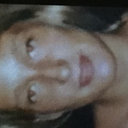Saethre-Chotzen syndrome: a clinical, EEG and neuroradiological study.
Keywords
Abstract
Saethre-Chotzen syndrome is a form of acrocephalosyndactyly with autosomal dominant inheritance, characterized by craniosynostosis, facial asymmetry, palpebral ptosis, deviated nasal septum, partial cutaneous syndactyly, and various skeletal abnormalities. We studied in detail the neurological, EEG, and neuroradiological features of a group of 11 (6 male, 5 female) patients with Saethre-Chotzen syndrome. Four subjects were affected by seizures; they had paroxysmal EEG abnormalities, and gross neuroimaging revealed destructive brain lesions or malformations. Our findings suggest that CNS involvement in Saethre-Chotzen syndrome might be more severe than previously reported and support the wider use of neurophysiological and neuroimaging techniques in the study of children with this syndrome.


